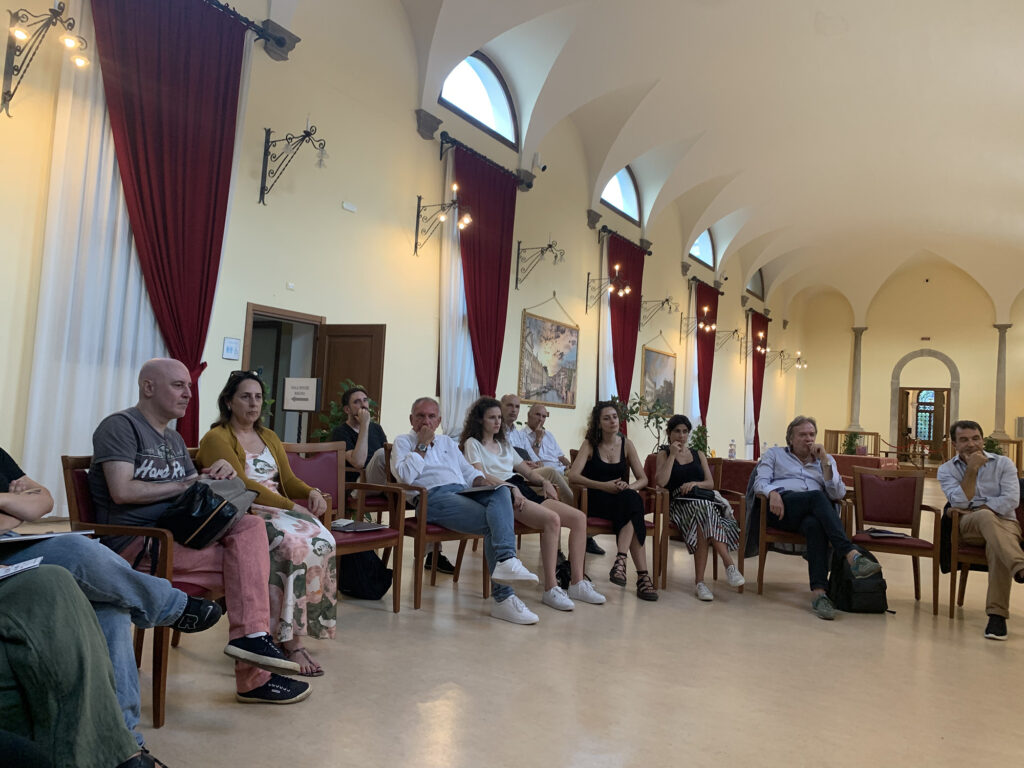Brain, Heart and Light
The new horizons of well-being
Friday 12 July, 19.00
The relationship between brain, heart and light helps us understand how, within the hospital environment, light can contribute to improving or worsening the patient’s experience perceived by the brain and manifested by the heartbeat. The case of a transplant with an artificial heart, due to which the patient no longer felt emotions, highlights the fact that – as already scientifically proven – our heart has a nucleus of neurons with previously unexpected functions, effectively a ‘brain of the heart’. In design, the three interrelated components must be taken into serious consideration especially in the arrangement of the architectural space to create an environment capable of promoting the patient’s well-being. Having evolved for millions of years under natural light, even though it is now accustomed to artificial light, the brain continues to need natural light. Today, research has gone so far as to produce an artificial light that simulates natural light, often combining the two sources. Due to its potential and implications, artificial light is among the richest technological ‘ingredients’ in the healthcare sector, ranging from accelerating convalescence to reconditioning psychophysiological balance. However, if poorly designed or not designed at all, artificial light can be a source of stress and discomfort. In hospital, patients cannot sleep well because of the only type of general lighting, which can be turned on – and dazzle – or turned off, putting the person’s safety at risk. With a new perspective compared to the traditional approach, the awareness of the correlation between brain, heart and light allows us to design architectures that connect mind, body and space, resulting in better conditions of well-being and optimization of the hospital stay experience.

SPEAKERS
Roberto Bianco is the Head of the Post-Operative Intensive Care Unit (UOS) at the University Hospital of Padua where, in the period 2016-2022, he was Deputy Director of the UOC of Cardiac Surgery. With the qualification for cardiac surgery using the da Vinci Robotic System, Bianco has performed numerous operations, including the first totally endoscopic myocardial revascularisation performed in Italy and the first totally endoscopic epicardial ablation treatment in Europe. He was a contract professor at the University of Padua, School of Specialisation in Cardiac Surgery, teaching the course on Surgical Anatomy and Operations.
Alberto Pasetti Bombardella is an architect specialised in the enhancement of cultural heritage through the use of light. His activity is aimed at the design of experimental forms of lighting with the aim of building perceptive systems suitable for stimulating and consolidating immersive sensorial experiences in environments with high emotional and physiological involvement. He is the author of numerous articles in which the relationships between Art and Neuroscience are explained in terms of the innovative use of light.
Sabina Brennan is a neuroscientist and psychologist. She is currently an adjunct assistant professor at Trinity College Dublin. Brennan holds a degree in psychology and a PhD in brain changes associated with aging. Through this work she has studied the importance of building resilience for brain health through mental participation and, among other factors, physical exercise. She has published over 40 articles on brain health, dementia and cognitive function in aging adults. In 2020, she published the book 100 Days for a Younger Brain (Corbaccio) in Italian.
Gino Gerosa is Full Professor of Cardiac Surgery at the Faculty of Medicine of the University of Padua, and Head of the Cardiac Surgery Division, Director of the cardiac transplant and mechanical circulatory support programme at the University Hospital of Padua. In 2001 he performed the first robotic coronary bypass on a beating heart and, in 2002, one of the first stem cell transplants in the world for post-ischemic cardiomyopathy. In 2007 he performed the first Italian implant of the Cardiowest TAH and in 2016 the first implant of a complete mitral pump on a beating heart. In 2023 he performed the first transplant with a heart stopped for 20 minutes. He is Past President of the Italian Society of Cardiac Surgery and co-author of over 450 publications.
Andrea Cristini has been working in the field of light and lighting since he graduated in Industrial Design at the Polytechnic of Milano in 2007. As a consultant he has assisted designers from different backgrounds, mainly in the creation of projects in the retail, hospitality and healthcare sectors. Passionate about light in all its forms, he has dedicated a good part of his professional experience to the dynamic control of light and its technologies with a view to making spaces more comfortable to use.
